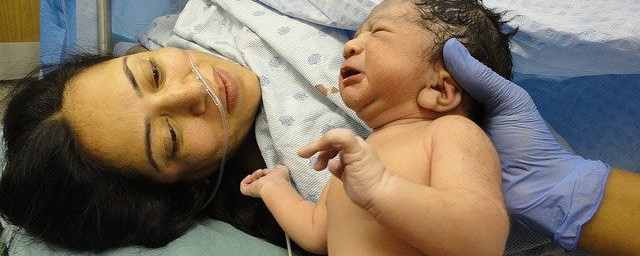
Episiotomy is a surgical incision made on the perineum and the posterior vaginal wall during delivery to enlarge the diameter of the vaginal outlet and expedite delivery of the baby. The incision is usually given using the episiotomy scissors. You have to take care of your episiotomy by following aseptic techniques as it can easily get infected if not properly handled leading to complications that can make the postpartum period painful and traumatic.
Is Episiotomy Really Necessary?
An episiotomy should not be considered a routine procedure and is only and should only be given by your care giver when it is considered necessary. The vaginal outlet is observed as the baby is being delivered and the incision should only be given if there is a great likelihood that the baby will come with associated laceration of the perineum in which case the incision is given to widen the vaginal orifice and secondly to control the direction of the incision helping to avoid the possibility of a 3rd or even 4th degree perineal tear.
Types of Episiotomy
There are two main types of episiotomy incisions, though other variations exist.
The median episiotomy is given in the mid line posterioly. This is not advised as it has a great likelihood of extending into the anus giving you a 3rd degree tear.
The mediolateral episiotomy is given at an angle posterioly around the 7 to 8 O’ clock position or the 4 to 5 O’ clock position and is the best episiotomy for widening the vaginal outlet for delivery and it also is associated with less bleeding.
Care of your Episiotomy
Your episiotomy will be sutured with absorbable sutures immediately after your baby and the placenta and membranes are delivered by your doctor. This prevents excessive blood loss and is also a factor in the early prevention of wound infection. For you to be able to prevent infection of the episiotomy site you really need to take care of it by keeping the place clean by undertaking the following measures:
- Sitz bath- Purchase a Sitz bath that can fit over your toilet seat and that allows your stitched perineum to soak in the sitz bath warm water for cleansing of the area and pain relief. You can add a disinfectant solution to the water for added effect.

- Avoid constipation by managing your diet appropriately and increasing your intake of fruits and vegetables
- Avoid the use of tampons till the episiotomy is healed which is usually in 1 or 2 weeks
- Change your perineal pads frequently as lochia and blood from your involuting uterus is a very good culture media for bacteria and can accelerate the development of infections
- Avoid sexual intercourse as it will lead to the breakdown of the stitches till it has healed.
- Take pain relief
- Pat your perineum instead of wiping it to avoid tugging on your stitches and ensure you pat from the front to the back.
- Use baby wipes instead of toilet paper as it is more soothing
- Squeeze the buttocks together while sitting as it puts less pressure on the stitches
- Sit on a pillow instead of a hard surface to lessen the pain and make you more comfortable
- Look out for infection early.
Signs of Episiotomy Infection
The first sign that your episitomy is getting infected is an
- Increase in the severity of the pain you are experiencing
- The development of high grade fever above 38 degree C.
- Swelling and redness around the stitches
- A very foul smelling discharge
- Pussy discharge from the wound
- Breakdown of the episiotomy stitches.
Be mindful though that other complications can follow episiotomy so you should always consult your doctor at the first sign of unusual symptoms.
Treatment of Infected Episiotomy
There are two treatment modalities for managing an infected episiotopmy
Medical treatment
The recommendation for the medical treatment of an infected episiotomy is the use of antibiotics. This may be prophylactic or based on the antibiotic sensitivity of the specimen taken from the infected episiotomy site. The usual recommendation is a broad spectrum antibiotic. Your doctor should be consulted for the best possible agents for the treatment of your infection.
Surgical management
For a broken down episiotomy, you will require a surgical intervention to resuture the episiotomy. After the old stitches have been removed, the wound is cleaned and wound dressing commenced to ensure granulation tissue formation before it is resutured again. These are done while being under antibiotic coverage. Again you should consult your doctor for the best possible approach for managing a broken down episiotomy after thorough assessment.
Avoid its sequelae. Be Prompt
Episiotomy is necessary in certain situations of vaginal delivery to prevent a worse complication from developing in the second stage of labor . It is a simple procedure with mostly untoward effects but can become infected if done in an aseptic environment or if you do not take measures to hygienically care for your episiotomy post delivery. Infection of an episiotomy can be dreadful and can lead to long term complications and sequelae from scarring to painful sexual intercourse hence it needs to be treated urgently and well.
Dr mawa
mypostnatalmanagement.com


